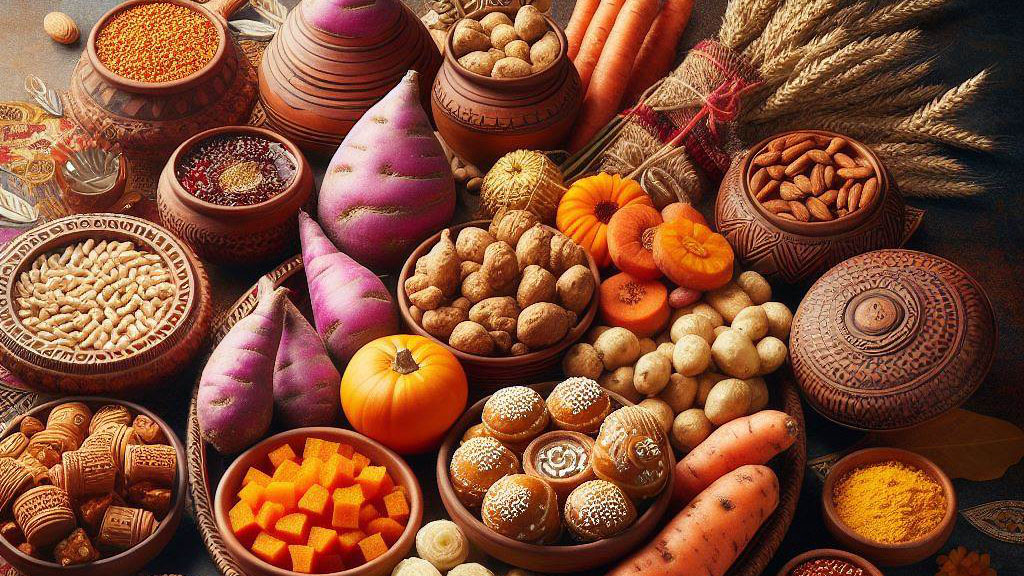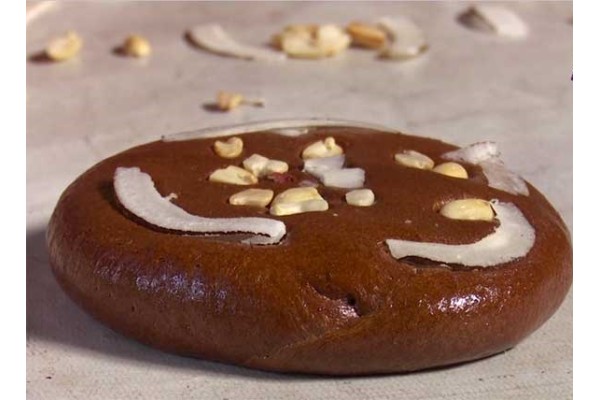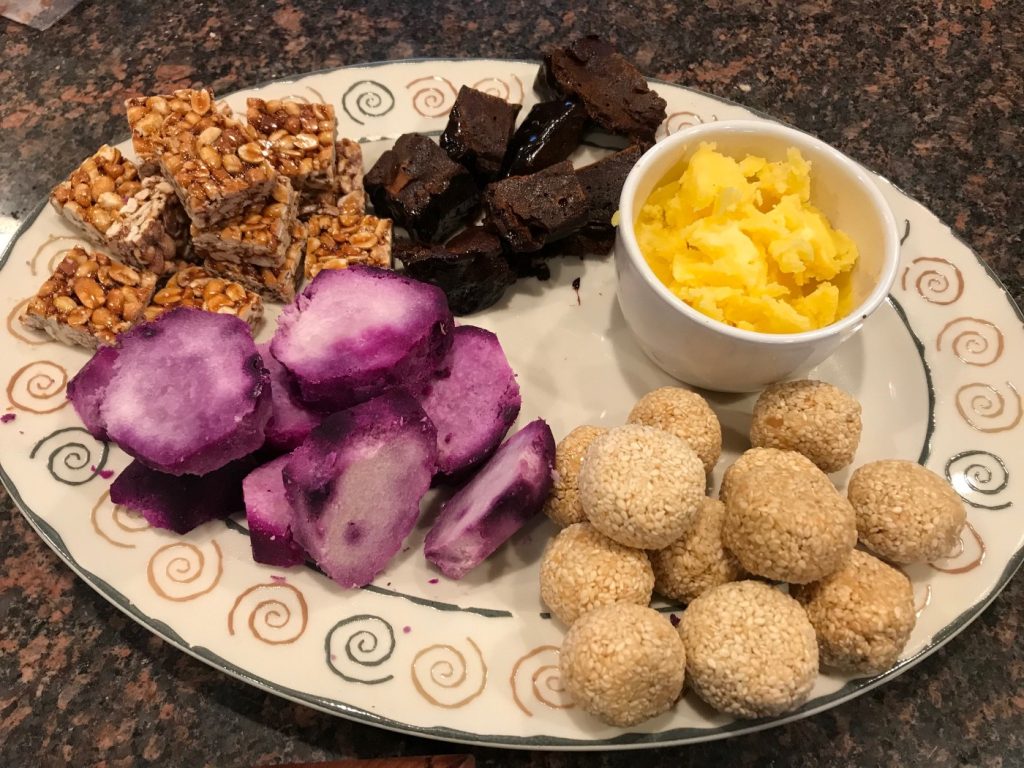Introduction:
Maghe Sankranti, a significant festival in Nepal, marks the end of the winter solstice and the beginning of longer days. Celebrated on the first day of the month of Magh in the Nepali calendar (usually around mid-January), this festival holds immense cultural and religious importance.
One of the central aspects of Maghe Sankranti Food is the delightful array of traditional foods that are prepared and shared during this auspicious time. This article will explore the festival’s cultural significance and delve into two famous Maghe Sankranti treats – Chaku and Til ko Laddu.

Maghe Sankranti, also known as Makar Sankranti in other parts of South Asia, is a festival that signifies the sun’s transition into the zodiac sign of Capricorn (Makar). The festival is celebrated with much enthusiasm across Nepal, and it is a time for family gatherings, cultural festivities, and acts of charity.
The highlight of Maghe Sankranti is the ceremonial dip in holy rivers, particularly at the confluence of rivers such as the Devghat in Chitwan. Devotees believe taking this holy dip during the early morning will cleanse them of sins and bestow good fortune. Following the ritual bath, families gather to perform pujas (prayers) and partake in delicious traditional foods associated with this festival.
You Might like: Kwati Recipe: The Delightful Nepali Dish
Nepali Maghe Sankranti Food:
Maghe Sankranti is synonymous with various traditional Nepali foods that hold cultural significance and are prepared with great enthusiasm.
Four of the main famous maghe sankranti foods are:
- Til ko Laddu
- Chaku / Chaaku
- Fulaura
- Tarul / shakarkand
One such delicacy is “Til ko Laddu,” a sweet confection made with jaggery and sesame seeds. Another popular item is “Chaku,” a sweet, molasses-like substance that is a staple during this festival. Let’s take a closer look at these two culinary delights.
Chaku: The Sweet Essence of Maghe Sankranti:
Chaku, a traditional Nepali sweet, is integral to the Maghe Sankranti celebrations. This sweet delicacy is made from concentrated sugarcane juice and is prepared by boiling it until it reaches a thick, dense consistency. Making chaku involves continuous stirring to prevent it from burning and to achieve the right texture.

The result is a dark, sticky substance with a rich, caramel-like flavor. Chaku is often molded into various shapes, including round discs or intricate figures representing animals, flowers, or religious symbols. These shapes add a touch of artistry to the sweetness and are often traded as a lucky charm and token of wealth among friends and family.
Chaku is not just a delicious treat; it also carries cultural and spiritual significance. During Maghe Sankranti, it is believed that consuming Chaku helps to ward off cold-related illnesses and provides warmth to the body. Additionally, the sweetness of Chaku symbolizes the importance of fostering sweet relationships and promoting goodwill among family members and friends during the festive season.
Til ko Laddu: A Nutrient-Rich Delight:
Another culinary gem associated with Maghe Sankranti is “Til ko Laddu,” or sesame seed laddoos. These small, round sweets are made from roasted sesame seeds and jaggery and sometimes include other ingredients like grated coconut or peanuts. Til ko Laddu is not only delicious but also packs a nutritional punch.
Sesame seeds, the main ingredient in Til ko Laddu, are rich in essential nutrients such as calcium, magnesium, and iron. During the winter, when Maghe Sankranti is celebrated, these nutrient-dense laddoos provide a much-needed energy boost and help keep the body warm.

The jaggery used in the preparation adds a natural sweetness and additional minerals like iron.
Making Til ko Laddu involves roasting sesame seeds until they release their aroma and then combining them with melted jaggery. The mixture is then shaped into small, bite-sized laddoos.
These laddoos are not only enjoyed during Maghe Sankranti but are also prepared and consumed during other festive occasions and celebrations in Nepal.
Maghe Sankranti: A Feast of Flavors:
Besides Chaku and Til ko Laddu, Maghe Sankranti is when traditional Nepali dishes are prepared to celebrate the harvest season. One such dish is “Ghee Bhat,” a special rice dish cooked with clarified butter, various spices, and seasonal vegetables. Ghee adds a rich and aromatic flavor to the rice, making it a favorite during this festival.
Another popular Maghe Sankranti dish is “Yam (Kand) Curry.” A winter vegetable, Yam is cooked with spices to create a flavorful curry that complements the festive atmosphere. The preparation of various lentil-based dishes like “Dal Bhat” is also a common practice during this time, reflecting the agricultural roots of the festival.
Beyond the culinary journey, Maghe Sankranti holds profound cultural significance in Nepal. Families come together to celebrate the harvest, expressing gratitude for the bounties of the land. Kite flying, holy dips in sacred rivers, and joyful gatherings add cultural richness to this vibrant festival.
Crafting Maghe Sankranti Memories
Creating Maghe Sankranti memories is a beautiful way to celebrate this auspicious festival. Here are some ideas to help you craft special memories:
Family Traditions
Maghe Sankranti is a time when families create lasting memories. From preparing traditional dishes together to participating in festive rituals, these moments strengthen familial bonds and pass down cultural legacies through generations.
Community Celebrations
Nepal’s communities celebrate Maghe Sankranti by organizing fairs, cultural events, and friendly competitions.

These communal celebrations foster a sense of unity and pride, showcasing the diverse cultural tapestry of Nepal.
Conclusion:
Maghe Sankranti in Nepal is not just a festival; it’s a celebration of culture, tradition, and culinary delights. The festival brings families together, encourages acts of charity, and fills the air with the aroma of delicious dishes. Chaku and Til ko Laddu, with their unique flavors and cultural significance, symbolize the warmth and sweetness that define this auspicious occasion.
As Nepalis gather to celebrate Maghe Sankranti, they not only indulge in these delightful treats but also reflect on the values of unity, gratitude, and the cyclical nature of life. The celebration is a prompt of the significance of being happy with those you love, making it an extraordinary time in the cultural tapestry of Nepal.
Maghe Sankranti is more than just a festival; it celebrates life, harvest, and cultural heritage. The culinary wonders of Chaku and Til Ko Laddu, coupled with the rich tapestry of rituals and traditions, create an immersive experience that resonates with the soul.
Also Read: Timur Spice: Origin, Uses, Side Effects and Benefits

